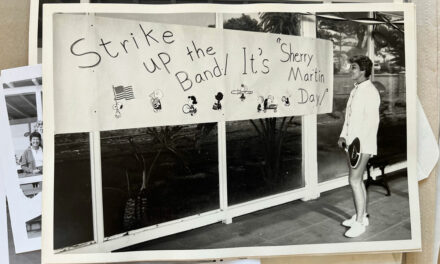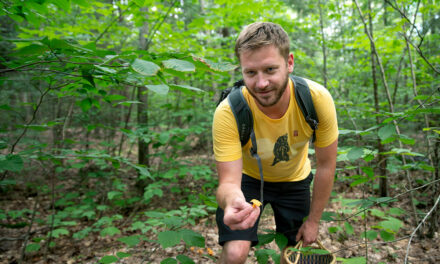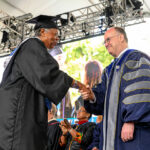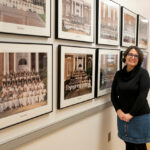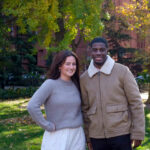
All in the Medical Family
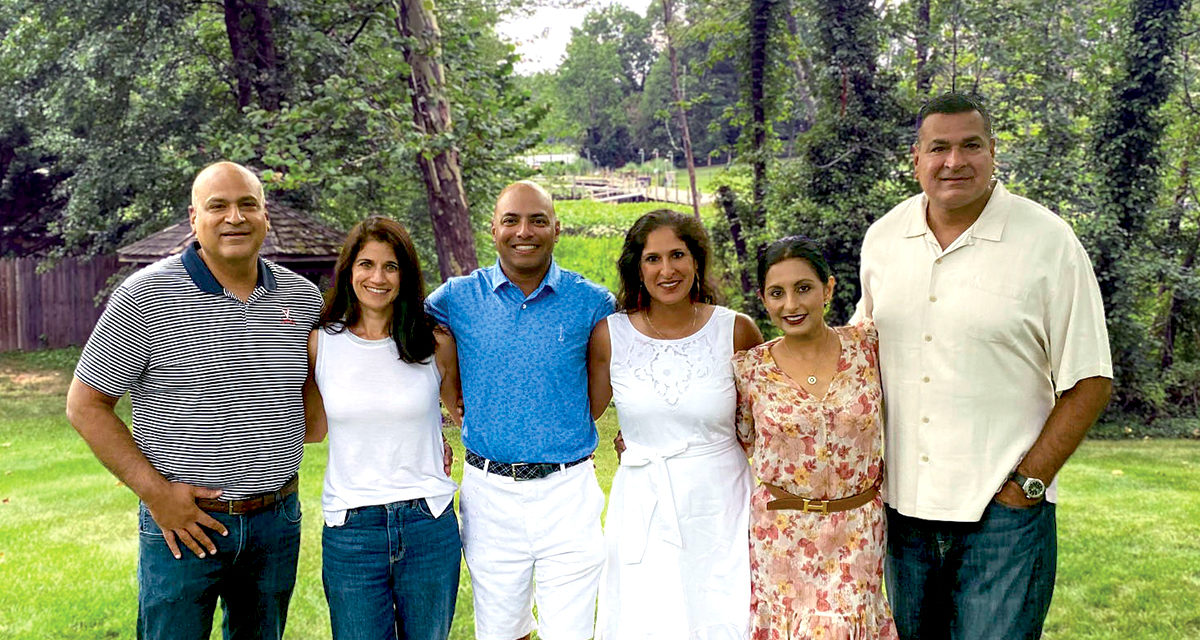
ALL IN THE MEDICAL FAMILY
A trio of siblings gives back through healthcare
BY HANNAH VAN SICKLE
Dr. Om and Mrs. Suman Chhabra were at the helm of a burgeoning pediatric practice in the Washington, D.C. metro area when they made the decision to enroll their three children, Bobby ’87, Anikar ’90, and Avni ’94, at St. Stephen’s School and St. Agnes School. Their main goal to raise three well-adjusted kids hinged on a pair of factors: unconditional support at home and access to the resources required to be successful, contributing members of society. Over the past three decades, since graduating from SSSAS, each of the Chhabra siblings has pursued an auspicious path in healthcare, sprung from the seeds of hard work and determination sown and nurtured by their parents who immigrated from India.
Dr. Bobby Chhabra ’87
Bobby Chhabra ran with his Saints education, treading a well-worn path between the gridiron and the biology lab before moving on to Johns Hopkins and the University of Virginia, where he has quite literally built a hands-on medical career for himself. Bobby knew from an early age he wanted to emulate his father’s career.
“It was very inspiring to see how my father cared for people, and how giving he was of himself,” Bobby says of the thoughtful person he watched changing lives. While he contemplated different careers in medicine, orthopaedic surgery turned out to be a natural fit. His expertise in hand, wrist, and elbow trauma, coupled with a keen interest in athletic injuries and microsurgery, mean Bobby’s patients run the gamut — from babies with congenital hand differences to elderly tennis stars — and provide him “acute opportunities to help people, and improve their quality of life.”
He credits his time at SSSAS as “incredibly influential” in helping him “learn not only how to study, but also how to investigate.” Overwhelmingly, he felt well-prepared when making the transition to Johns Hopkins (one of the toughest pre-med environments for undergrads), thanks to the influence of those he came across during his tenure — notably Mr. Fred Atwood, his biology teacher. He further attributes learning to juggle multiple things at a small independent school as contributing to his success as a leader in his chosen field, not to mention “great teaching and mentoring,”
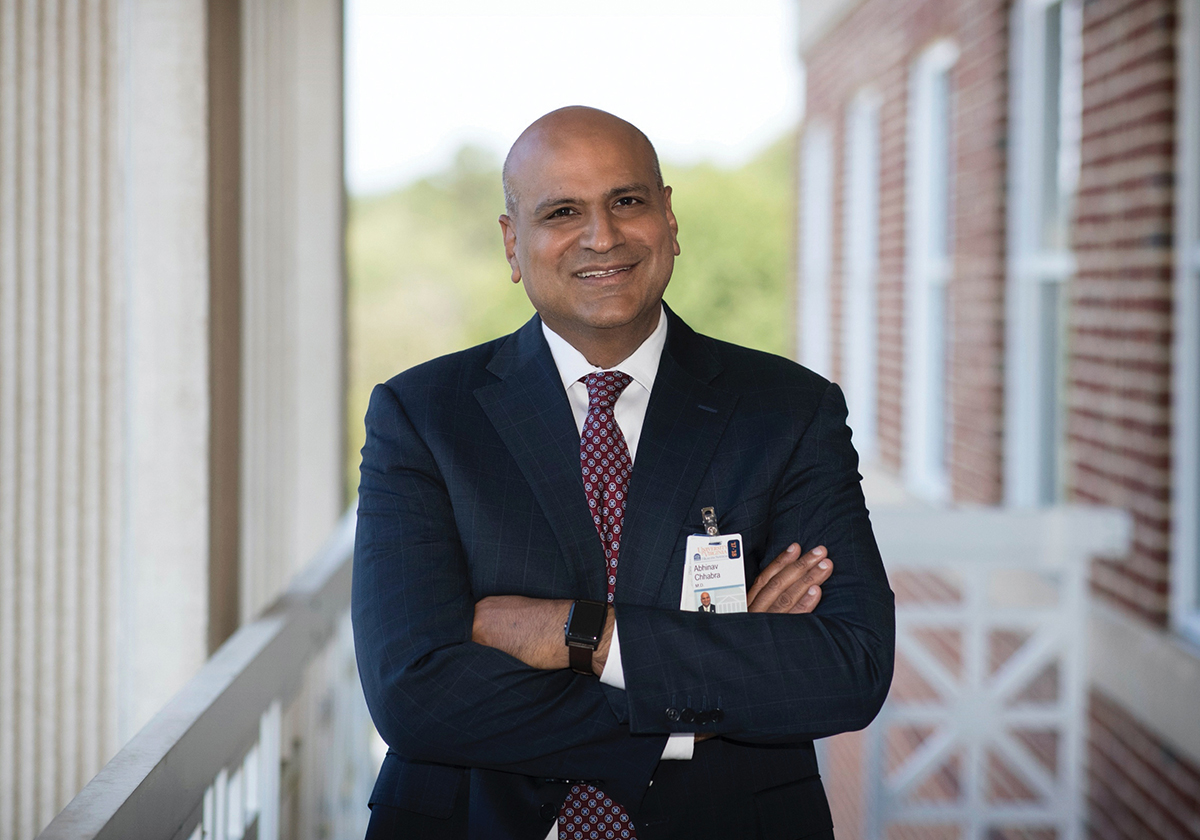
Dr. Bobby Chhabra ’87
“I learned a lot of things at a very young age: how to listen before making decisions; how to be collaborative in finding solutions to move things forward; and how — while you might not get exactly what you want — you’ll make things better if you are willing to be persistent, resilient, and focused.”
– BOBBY CHHABRA
Being a student-athlete afforded Bobby myriad life lessons. “Playing football taught me to be resilient and focus on time management,” he remembers, citing these skills as instrumental in getting through medical school and later in establishing his career. His time on the turf also inspired his work with athletes. Bobby returned to UVA in 2002 (he’s what they call a “triple ‘Hoo,” having now joined the faculty) where he was instrumental in creating the University of Virginia Hand Center. He is currently the Lillian T. Pratt Distinguished Professor and Chair of Orthopaedic Surgery and Professor of Plastic Surgery, Professor of Pediatrics, and the hand and upper extremity consultant for the UVA Department of Athletics.
“It is both gratifying and humbling to be able to take care of so many people with difficult problems and high expectations for performance,” says Bobby of what he loves most about his practice: the ability to help others. “My dad’s influence may be seen in the fact that I take care of a lot of kids,” he adds. In 2014 he was featured on the Today Show after creating thumbs for a child born without any (a rare condition called thumb aplasia that affects about one out of every 100,000 infants) in what Bobby called, at the time, “an incredibly elegant operation.”
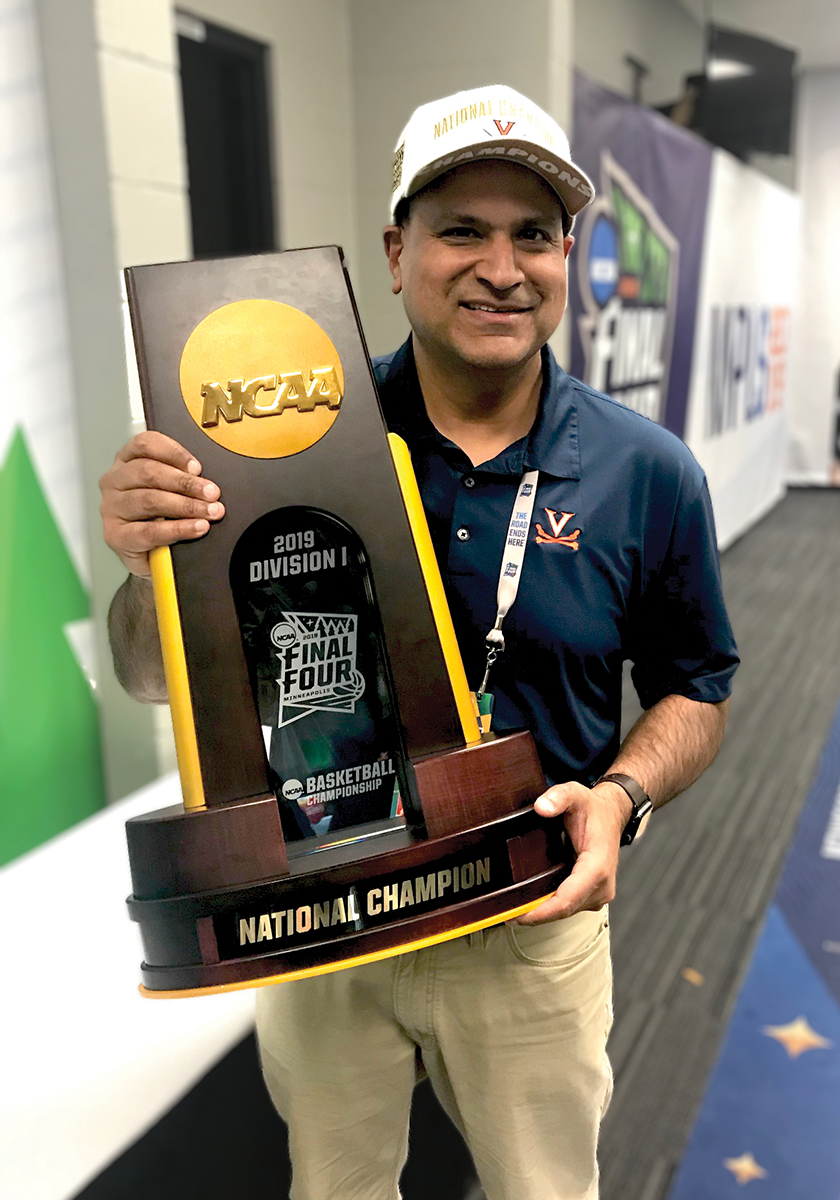
Bobby holding UVA’s 2018 Final Four National Championship trophy.
This spirit of giving back — modeled both by his parents and many of the adults in the SSSAS community who gave tirelessly of their time to shape his experience there — continues to permeate Bobby’s work. When he is not busy taking care of patients at UVA Health in Charlottesville, a very busy Level 1 trauma and quarternary care center, he is committed to conducting clinical research and teaching “a wide range of learners,’’ including medical students, residents, and fellows who receive specialty training in hand/wrist/elbow and microsurgery.
He’s also been focused on fulfilling a single dream: bringing the UVA Orthopaedic Center on Ivy Road to fruition. “To enhance the ability to provide orthopaedic care — not only for our students and community members in the city of Charlottesville but also for individuals across the region, the state, and the country — is something I’ve aspired to do for some time” Bobby says. The state-of-the-art comprehensive Orthopaedic facility is slated to open its doors in 2022.
After growing the department to over 30 orthopaedic surgeons in eight different specialties, building a comprehensive orthopaedic center for the region from the ground up was no small feat. In hindsight, Bobby points to fundamental lessons he learned from his parents and at school as instrumental in paving the way and developing a lifelong work ethic: “I learned a lot of things at a very young age: how to listen before making decisions; how to be collaborative in finding solutions to move things forward; and how — while you might not get exactly what you want — you’ll make things better if you are willing to be persistent, resilient, and focused,” he says.
As for the overarching accomplishment of which he’s most proud? “The ability to navigate and negotiate obstacles, to keep something that is a dream and a vision moving forward so it becomes a reality,” he says. Plus teaching his “little” brother (who stands 6’ 9” and was once his junior resident) everything he knows — save for how to play basketball.
Dr. Anikar Chhabra ’90
“I started beating Bobby in basketball when he was in ninth grade and I was in fifth grade,” says Anikar Chhabra, who played on the 1990 State Championship basketball team at SSSAS before dribbling his way to Cambridge where he played NCAA Division I men’s hoops at Harvard. Today, the head orthopedic surgeon for Arizona State University (ASU) credits his own days on the parquet as giving him the necessary foundation to treat the high-performing athletes he counts among his patients. “It’s easy to take care of an athlete when they know you’ve been there before,” Anikar says of his familiarity with locker-room culture and conversing with coaches and trainers — all of which gives him “instant credibility” in orthopaedics.
Anikar credits Win Palmer — his fifth grade teacher and varsity basketball coach — as vital in shaping his work ethic. “When you’re down, you can’t get too down; when you’re high, you can’t get too high,” Anikar recalls, sharing an oft-quoted kernel of wisdom reflecting the spirit that permeated his years playing ball for SSSAS.
“We were very successful,” he says. “Coach Palmer and the group of guys on that team were probably more influential in shaping who I am today than anyone outside my family.” Beyond the winning (the team lost just a handful of games over two seasons), lessons came from everyday camaraderie in the locker room and being together on the bus, which inevitably led Anikar to his current advice for any young person contemplating their future: “Enjoy the process, as it goes fast.”
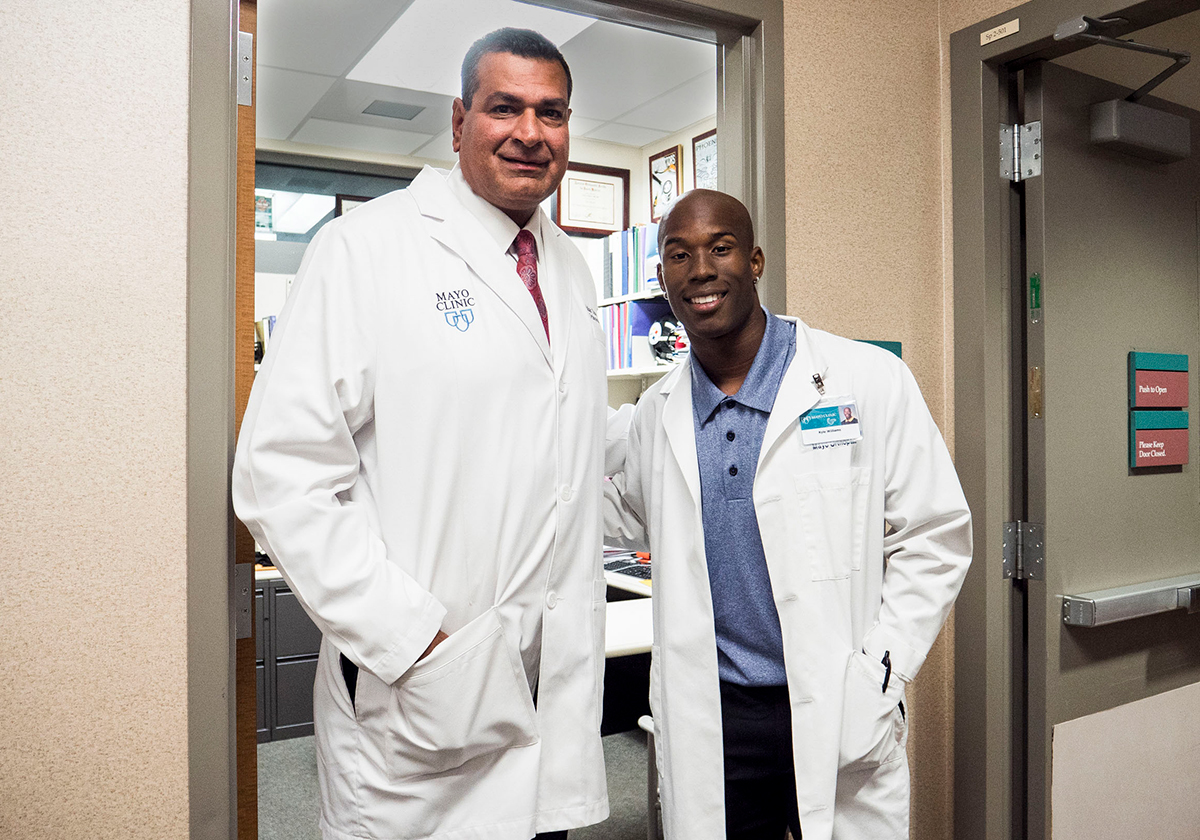
Anikar with former ASU football player Kyle Williams. After being under Anikar’s care, Kyle decided to pursue medicine. He spent three years as a research assistant under Anikar.
“It’s one thing to take care of a patient, and do it well; it’s another thing to teach the next generation. ”
– ANIKAR CHHABRA
Growing up, Anikar watched his father’s career very closely. “It’s very humbling to see somebody dedicate their life to helping others,” he recalls, pointing to a strong family background in medicine as urging him along his path towards sports medicine. Plenty of mentors along the way inspired Anikar, including Dr. Arthur Boland, head orthopaedic surgeon for Harvard Athletics since 1975. After inevitably sustaining injuries over his own four-year basketball career, he sought out the team physician “in the training room, in his office, and at his clinics.” While playing for the Harvard Crimson, Anikar was an economics major contemplating a career in business. After three summers spent working on Wall Street, a realization regarding the volatility of the stock market (and total lack of control surrounding outcomes) urged him back into medicine.
Following in his brother’s footsteps, Anikar landed at the University of Virginia School of Medicine, where Bobby was a fourth-year medical student. “There were four different stops along the road where he was my supervisor and, I’ll tell you, it was great for us,” he said of his brother’s influence. We get along really well, and he pushes me harder— and expects more out of me — than anyone.” Following residency, Anikar completed his Sports Medicine Fellowship at the University of Pittsburgh, where he was lucky enough to work with some of the world leaders in the field and help care for the Pittsburgh Steelers and University of Pittsburgh athletic teams. At the conclusion of his fellowship year, Anikar was presented with a trio of options: stay in Pittsburgh, return to UVA, or head to Arizona. Although his wife is a native of The Grand Canyon State, going to Arizona meant exploring uncharted territory given the dearth, at that time, of academic sports medicine jobs in the southwest.
Anikar was ultimately recruited as the director of Sports Medicine at Mayo Clinic Arizona, citing the ability to teach residents, fellows, and conduct research as the main reason he accepted. While he handles 500-700 patients’ operations every year, teaching has always been a passion. “It’s one thing to take care of a patient, and do it well; it’s another thing to teach the next generation,” Anikar explains. “Teaching creates a much more lasting effect [by leaving] one’s legacy on a much bigger scale.” In Scottsdale, Anikar is a professor of Orthopedics (where he remains active in the residency program) and vice chair of clinical practice at Mayo Clinic Arizona.
As head orthopedic surgeon for Arizona State University since 2007, Anikar specializes in minimally invasive surgery including arthroscopy of the knee and shoulder and takes care of 700 athletes across all sports — another facet of orthopaedics he and his brother share (Bobby takes care of the UVA basketball team and was on hand in Minneapolis when they won the national championships in 2019).
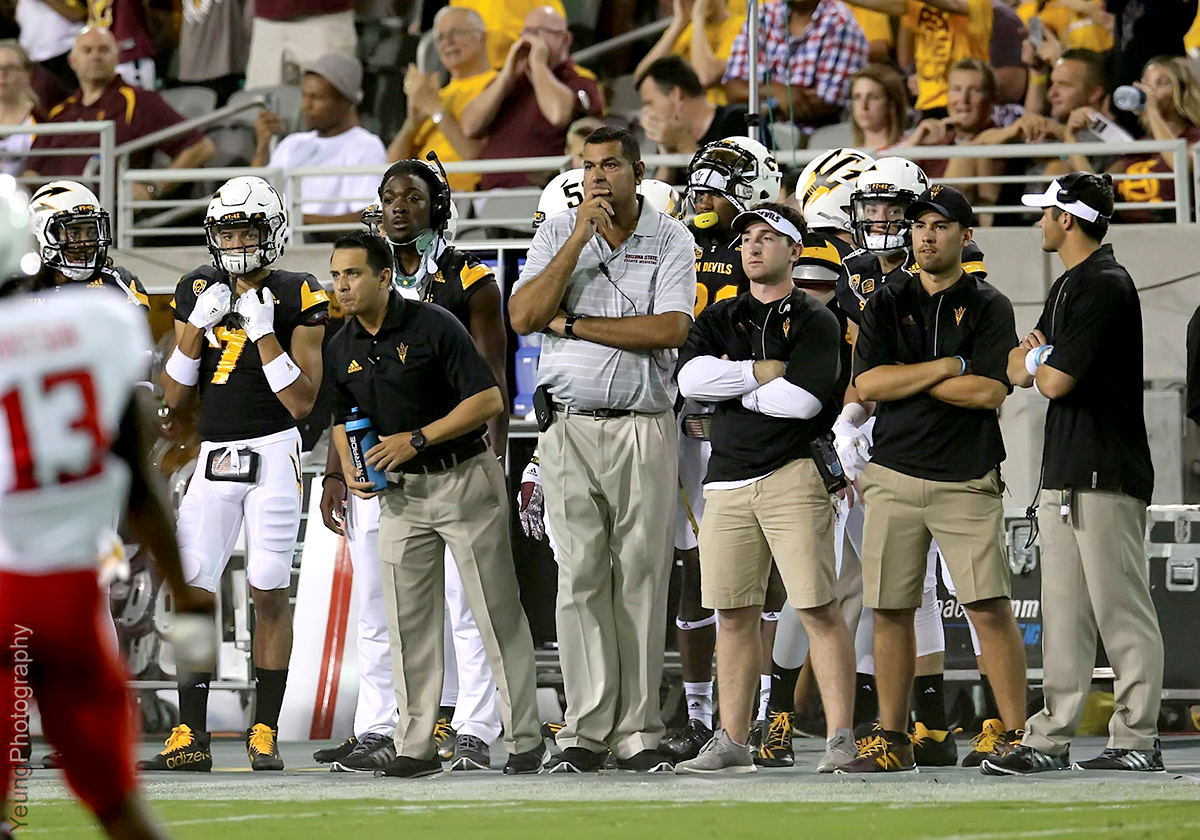
Anikar Chhabra ’90 on the ASU sidelines.
“It’s hard not to cheer for your own patients,” he says, sharing an outlook gleaned from operating on individuals from all across the country — including over 25 ASU football players in the past three years. “There is no reason not to wish for others to succeed, especially after coming back from an injury,” he adds. He is relieved that the Cavaliers and Sun Devils have yet to kick off against one another, alleviating his declaration of allegiance. Bobby, on the other hand, admittedly “bleeds blue and orange.”
Despite myriad accomplishments, Anikar remains goal-oriented. “I’m always chasing something bigger,” he says. At present, that equates to bridging the relationship between ASU and the Mayo Clinic by building an international premiere sports medicine center. “In Arizona there is nothing like that,” he says. It was the absence of such facilities that urged him toward Scottsdale in the first place.
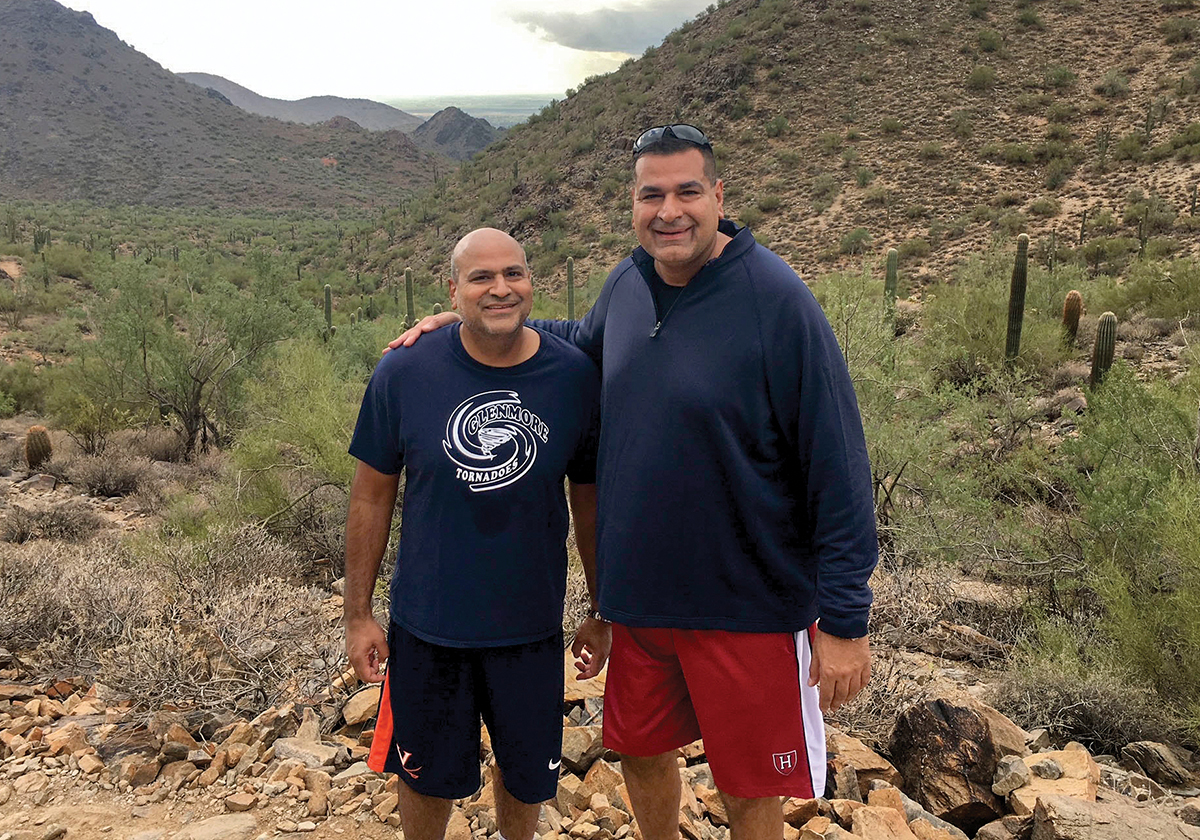
Bobby and Anikar in Arizona.
As his clinical practice expands, Anikar remains committed to improving hospital systems and eliciting change that will alter the course of medicine going forward — namely, working to shift the old-school work-ethic of living at the hospital and being on call every other night. “That’s not the world we live in anymore, and medicine has got to change,” he adds, underscoring that one can still be a good physician while raising kids and enjoying family life.
“We have a bigger job than just taking care of patients,” he continues. The current trend of physician burnout is hovering around 60-70% by age 50, which is why creating systems that support work-life balance for those in healthcare is imperative. “My sister has it down; she’s figured it out, and I wish I had her smarts,” Anikar says. The youngest of the Chhabra siblings — touted as the greatest advisor in the family — is the only one to follow in their father’s footsteps and open her own pediatric practice, albeit a pediatric dental practice.
Dr. Avni Chhabra Rampersaud ’94
In fact, it was the line of physicians preceding her that inspired Avni Chhabra Rampersaud to forge her own path and explore dentistry. As an undergrad at Duke, Avni was an English major, shying away from the 400-person lecture halls and gravitating instead toward discussion-based literature classes and small writing seminars. These classes became her “happy place,” one she literally accessed by walking to a different part of campus to hang with the English majors who exuded “a totally different vibe” from her peers and professors in the pre-dental program.
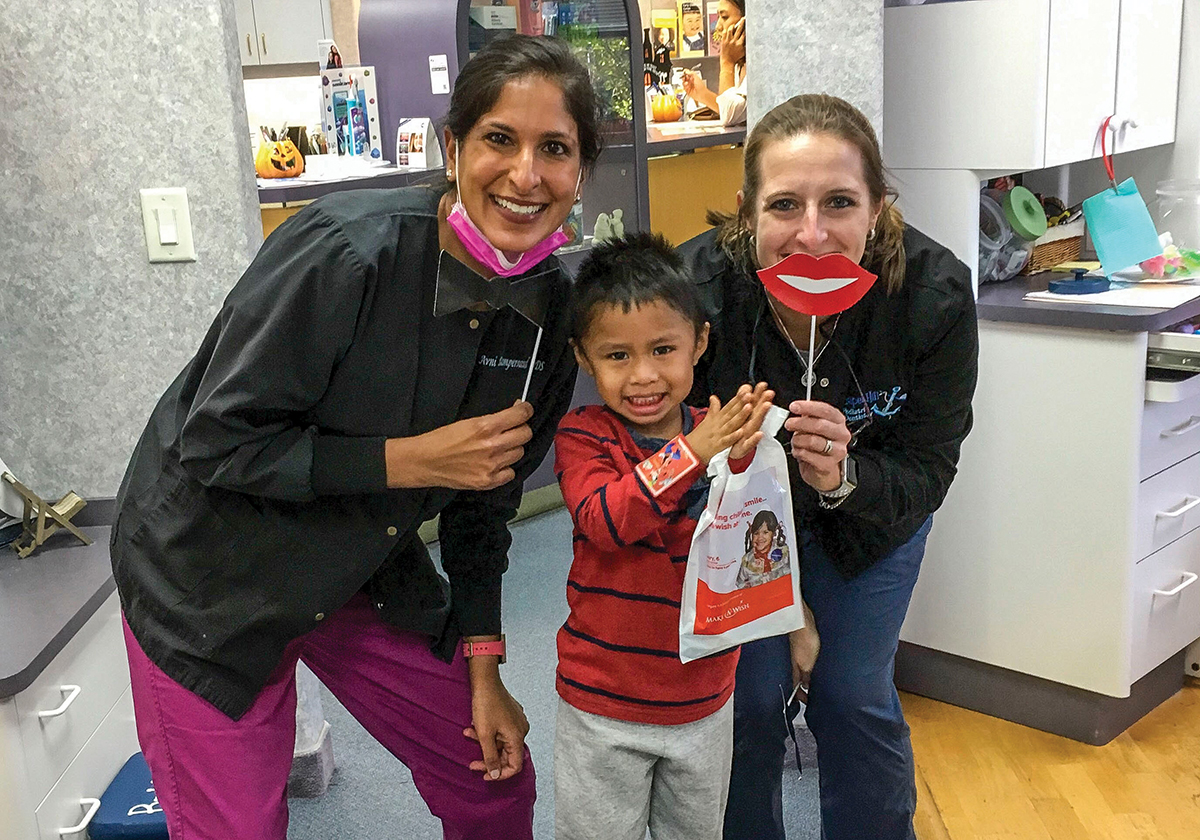
Avni (left) at work with a young patient and a colleague.
Avni’s older brothers encouraged her, relating ways to catch up in science classes over the summer if need be, which solidified the decision to pursue her passions. This unique academic path shaped Avni in ways that were not only fulfilling and gratifying, but also caused her to stand out from the crowd. She contemplated advertising and law school, and felt the tug of both the biology and English majors. When she decided to specialize in pediatrics — which requires a “pretty grueling interview process” — the road less travelled continued to garner Avni’s attention. The writing and communication skills she developed while pursuing a degree in the humanities became instrumental when securing a residency position post dental school. All the while, a mantra was being shaped: Pick something you are passionate about, and you will make whatever path you aspire to go down work.
Today, after nearly 20 years at the helm of her own private practice, the pearl of wisdom Avni most often passes along is simple: “You don’t have to follow the cookie-cutter recipe. Find something that interests you, find your niche,” — which, for Avni, can be traced back to the English Department at SSSAS.
“I always loved classes that revolved around discussion, participation, and dissecting novels — they were almost my escape,” she says of the countless lessons learned there. Her experiences at SSSAS instilled Avni with the confidence to stand up in front of a classroom, to voice her opinion, to attempt things on the unconventional path, and to be a leader. “I developed the confidence to think outside the box,” she says. In large part, this was due to fostering interpersonal relationships with great coaches and leaders as a student-athlete.
“I count the time management learned from playing varsity sports — in addition to my excellent academic experience — as valuable takeaways from my time at SSSAS,” says Avni who played field hockey, lacrosse, and basketball. “The all-girls education I received at St. Agnes allowed me to figure out who I wanted to be,” she says. Legendary coaches Kathy Jenkins and Marsha Way were influential “not only in supporting my athletic ability, but also in forming friendships beyond school.” Avni remains in regular communication with Kathy — a national leader in girls’ sports for more than four decades — who is up-to-date on all things athletic with Avni’s kids.
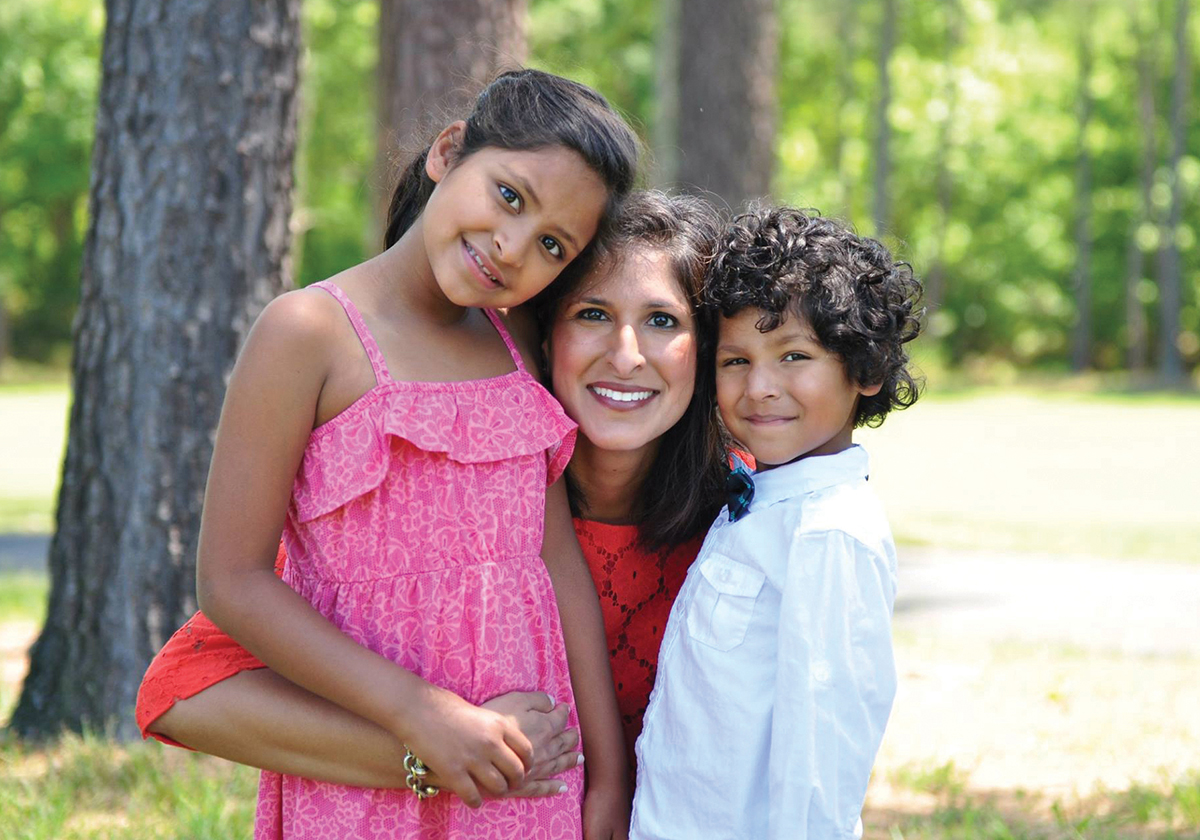
Avni and her children, Saia and Milan in May 2014.
“Just as my parents and my brothers are a huge piece of my puzzle, I want to be able to be there for my kids as they get older.”
– AVNI CHHABRA RAMPERSAUD
Today, Avni remains driven and passionate. She counts her father, who retired during the pandemic after 55+ years in private practice, as her closest advisor. “To this day, I call him with questions,” she says, about staffing, running a small business, clinical issues, and the basics of pediatrics — how to build relationships with families over generations. Giving back to the community ranks high on her list of priorities, second to her family, which she does through volunteering as a dentist in underserved areas and by educating others — something “that will always be an ambition of mine,” she says.
For the moment, Avni is content. She feels fortunate to have built a successful career and is enjoying the proverbial fruits of her labor, chief among them her family and striking a work-life balance that keeps her happy and satisfied. “Just like my parents and my brothers are a huge piece of my puzzle, I want to be able to be there for my kids as they get older,” she says. “My ambition may change colors and flavors with time, but it never dies.” Looking ahead to the next year, Bobby’s daughter arrives at Duke in the fall to row for the Blue Devils. “[My niece] has been a huge role model for my daughter, a freshman in high school who plays golf,” says Avni of her close-knit extended family.
History appears to be repeating itself, with the next generation of student-athletes embarking on their respective collegiate careers. Bobby’s son is a swimmer at Swarthmore, and there are six grandchildren in total (three boys and three girls, a balanced number that makes their grandmother very happy). While the Chhabra siblings are scattered across the country, they prioritize getting together every year to enjoy each other’s company and partake in mutual interests like spending time outdoors, attending sporting events, and exploring new cities.
For a family driven by goals, working hard is a tie that binds them — as are shared values which include making time to step back and enjoy the process. In the end, for a trio of siblings well-versed in successful scientific feats, Anikar distills their shared approach down to an art: “Each of us has a multi-faceted approach to success, that started with our parents who still, to this day, push each of us to do good and be a better person for the world.”

